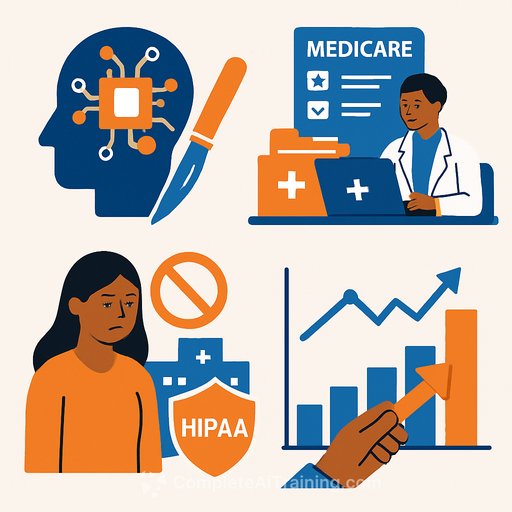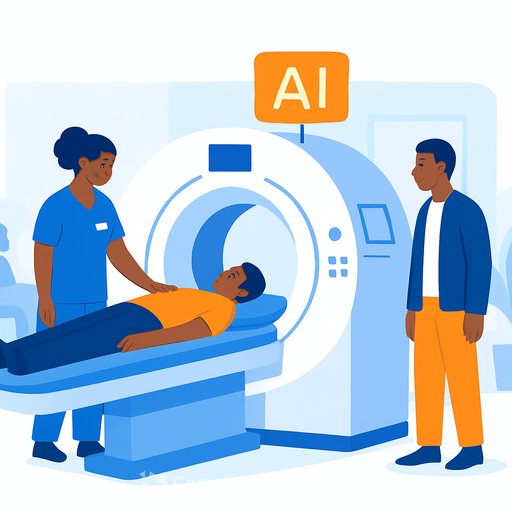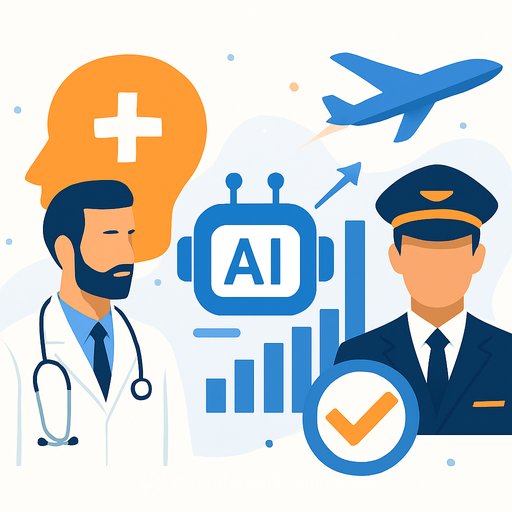AI's Double-Edged Scalpel in Healthcare: Efficiency, Risk, and What to Do Next
AI is now embedded across care delivery, administration, and imaging. It promises faster decisions, fewer manual tasks, and more precise screening. It also raises hard questions about safety, staffing, and compliance. For healthcare leaders, the window to set guardrails is now.
Where We Are Today
CMS began deploying AI for prior authorizations in Traditional Medicare in 2024 under the WISeR model, backed by the January 2024 Interoperability and Prior Authorization Final Rule. Early targets include high-cost outpatient services, with goals to cut processing time for straightforward cases by up to 70%. A March 2025 AMA survey reported 61% of physicians worry unregulated AI in prior auth is driving more denials and undermining clinical judgment, prompting calls for stronger oversight and transparency.
At the bedside, Kaiser Permanente nurses have protested AI use, warning about patient safety risks, reduced staffing, and delayed care. Demonstrations in San Francisco (April 2024) and San Rafael (August 2025) linked staffing cuts to AI deployment. Kaiser states its tools support clinicians and do not replace human decision-making.
Compliance pressure is rising. With AI touching PHI across workflows, the HIPAA Security Rule requires data minimization, de-identification where possible, encryption, access controls, and vendor diligence. OCR has toughened penalties, and a proposed 2025 HHS rule would make AI risk analysis explicit within security programs. Expect deeper scrutiny of third-party models, audit trails, and explainability.
Clinical gains are real in imaging. AI-assisted mammography has shown up to a 17.6% increase in detection rates in real-world studies like PRAIM, adding about one cancer per 1,000 women screened without higher recall. Market growth is projected from $538.39M in 2025 to $844.52M by 2034, with Google Health, iCAD, Hologic, and GE Healthcare pushing the field. Adoption varies, even with 20+ FDA-cleared applications, due to workflow fit, liability, and budget constraints.
Internationally, Morocco's "Digital Morocco 2030" strategy is accelerating uptake. About half of hospitals report AI scheduling, 30% use diagnostic support, and robotic surgeries rose 30% from 2020-2024. A 2023 study at Casablanca's University Hospital found 48% of doctors use AI daily for diagnostics. Partnerships like the Ministry of Health with IBM on remote breast cancer detection and startups such as DeepEcho and DataPathology show how AI can expand access where specialists are scarce.
Market Signals: Who Stands to Gain, Who Faces Headwinds
Winners include payers and health-tech firms that automate prior authorization and utilization management. UnitedHealth Group (Optum), CVS Health (Aetna), and focused players like Evolent Health are positioned to scale. Imaging and diagnostics leaders-Google Health, iCAD, Hologic, GE Healthcare-are set to benefit as evidence and workflow integration improve.
Cloud providers with HIPAA-capable stacks-Microsoft Azure and AWS-will enable secure AI development and deployment. Cybersecurity, data governance, and model monitoring vendors will see rising demand as boards prioritize explainable, auditable AI.
Risks concentrate in smaller providers and clinics with thin margins. Upfront investments in IT, workflow redesign, and training are substantial. Organizations perceived as favoring cost savings over human care could face backlash, regulatory attention, and reputational harm. Gaps in HIPAA compliance and ethical AI practices could bring fines and litigation.
What Healthcare Leaders Should Do in the Next 90 Days
- Map AI use cases: prior auth, coding, scheduling, imaging, RPM. Prioritize those with clear safety, quality, or financial ROI.
- Stand up AI governance: a cross-functional committee (clinical, compliance, privacy, security, legal, IT, patient safety) with decision rights and audit plans.
- Run a HIPAA-focused AI risk analysis: data flows, PHI exposure, encryption, access controls, vendor risk, incident response, and model monitoring.
- Mandate vendor transparency: clinical evidence, bias testing, audit logs, override workflows, and clear accountability for denials or errors.
- Pilot with clinician co-design: small cohorts, pre/post metrics (denials, turnaround time, safety events, satisfaction), and fast feedback loops.
- Protect staffing and safety: define human-in-the-loop checks, escalation paths, and medication safety guardrails; measure net effect on workload.
- Train the workforce: brief, role-based training on how the model works, known limits, override criteria, and documentation standards.
- Address equity: run bias checks across demographics; monitor recall, false negatives, and denials by subgroup; publish findings internally.
- Communicate with patients: explain where AI is used, how privacy is protected, and how clinicians remain accountable.
Policy and Compliance: The Rules Are Getting Tighter
Expect more state and federal activity on transparency, bias mitigation, and accountability for AI-driven decisions in care and coverage. CMS's push on prior authorization will pull providers and payers into similar models, increasing demand for auditable, interoperable tools. Organizations with clear governance, clinical validation, and security will move faster with less risk.
Useful references:
Clinical Outlook: Imaging Today, Personalized Care Tomorrow
Short term: more AI in prior auth, documentation, and imaging triage; focused debate on denial rates, patient safety, and clinician oversight. Expect joint governance models that give physicians and nurses a formal voice in deployment decisions.
Long term: AI will extend into drug discovery, precision therapies, and predictive deterioration alerts. The big challenge is equitable access and continual bias monitoring, so benefits reach rural, underserved, and multilingual populations.
Upskilling for AI-Enabled Care
Build internal capability early. Clinicians and managers who understand data flows, model limits, and audit requirements will lead safer, faster implementations. For structured learning paths by role, see Complete AI Training - Courses by Job.
Bottom Line
AI can cut waste, improve detection, and ease administrative load-if leaders anchor it in clinical evidence, workforce support, and HIPAA-grade controls. Pair every efficiency gain with a safety check, a human override, and clear ownership. That is how to benefit from AI's sharp edge without harming the trust at the core of care.
This content is for informational purposes only and is not financial advice.
Your membership also unlocks:





